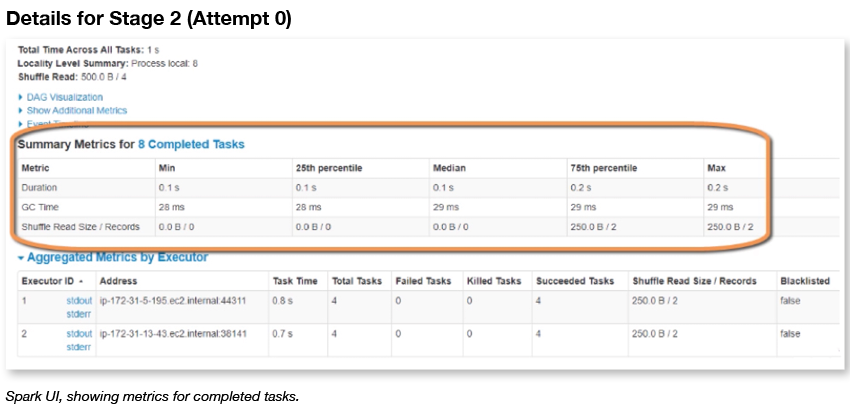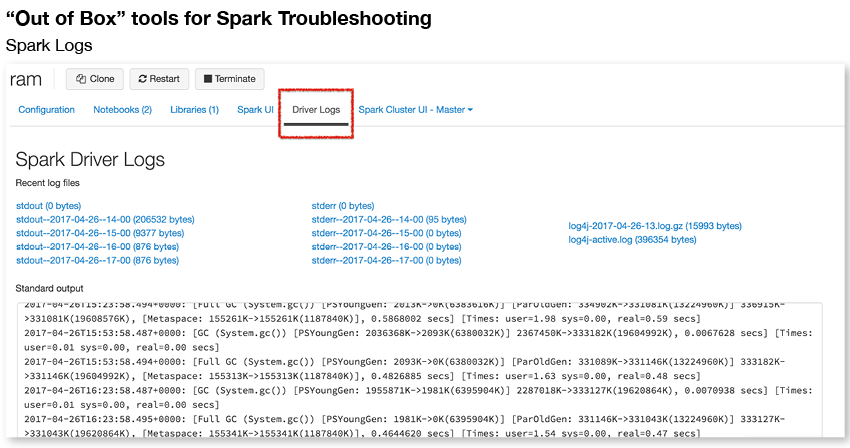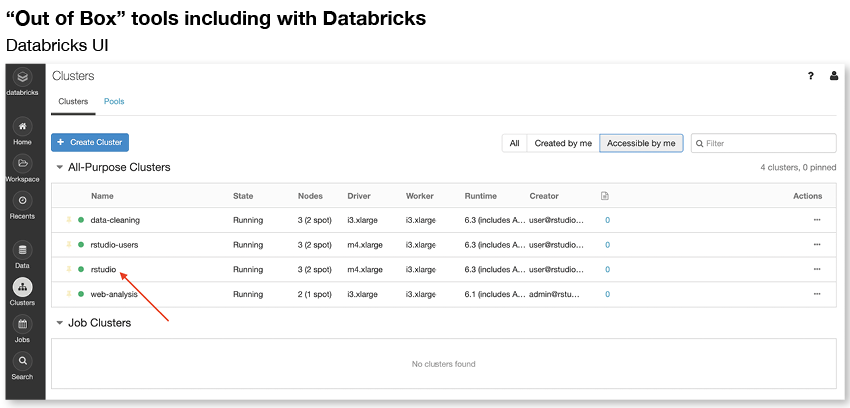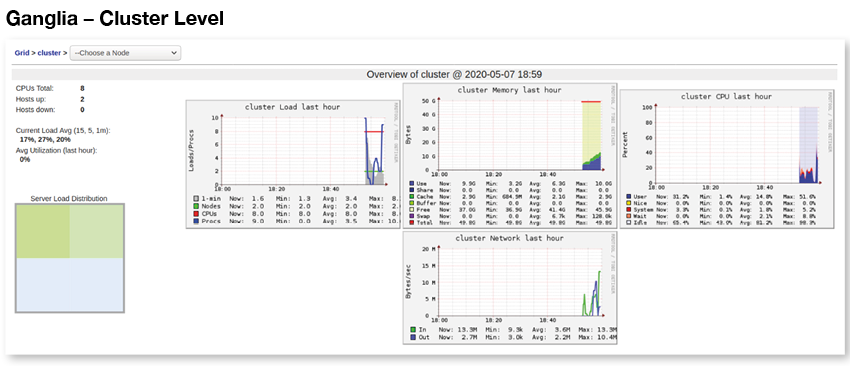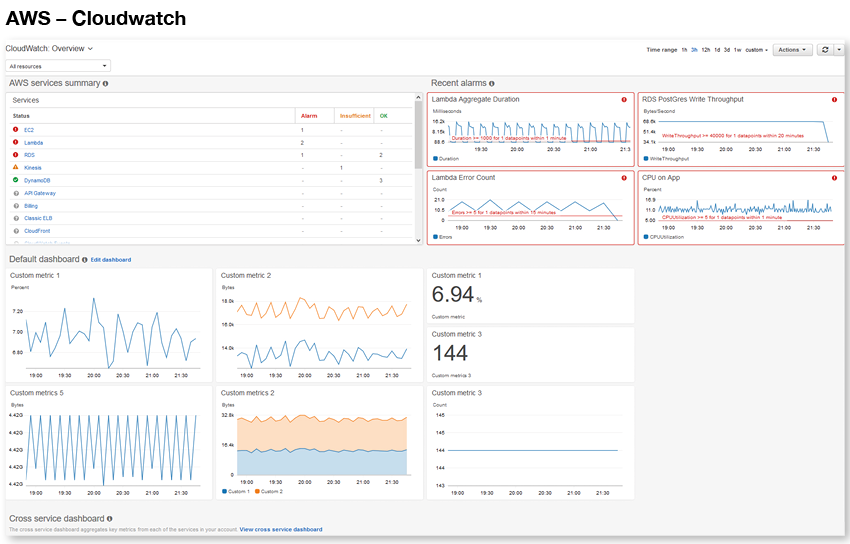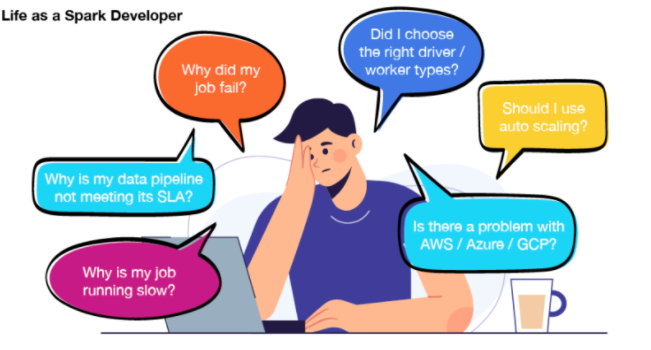
Note: This guide applies to running Spark jobs on any platform, including Cloudera platforms; cloud vendor-specific platforms Amazon EMR, Microsoft HDInsight, Microsoft Synapse, Google DataProc; Databricks, which is on all three major public cloud providers; and Apache Spark on Kubernetes, which runs on nearly all platforms, including on-premises and cloud.
Introduction
Spark is known for being extremely difficult to debug. But this is not all Sparks fault. Problems in running a Spark job can be the result of problems with the infrastructure Spark is running on, inappropriate configuration of Spark, Spark issues, the currently running Spark job, other Spark jobs running at the same time or interactions among these layers. But Spark jobs are very important to the success of the business; when a job crashes, or runs slowly, or contributes to a big increase in the bill from your cloud provider, you have no choice but to fix the problem.
Widely used tools generally focus on part of the environment the Spark job, infrastructure, the network layer, etc. These tools dont present a holistic view. But thats just what you need to truly solve problems. (You also need the holistic view when youre creating the Spark job, and as a check before you start running it, to help you avoid having problems in the first place. But thats another story.)
In this guide, Part 2 in a series, well show ten major tools that people use for Spark troubleshooting. Well show what they do well, and where they fall short. In Part 3, the final piece, well introduce Unravel Data, which makes solving many of these problems easier.
Whats the Problem(s)?
The problems we mentioned in Part 1 of this series have many potential solutions. The methods people usually use to try to solve them often derive from that persons role on the data team. The person who gets called when a Spark job crashes,
such as the jobs developer, is likely to look at the Spark job. The person who is responsible for making sure the cluster is healthy will look at that level. And so on.
The following chart, from Part 1, shows the most common job-level and cluster-level challenges that data teams face in successfully running Spark jobs.
| 1. Executor and core allocation | 6. Resource allocation |
| 2. Memory allocation | 7. Observability |
| 3. Data skew / small files | 8. Data Partitioning vs. SQL queries / inefficiency |
| 4. Pipeline optimization | 9. Use of auto-scaling |
| 5. Finding out whether a job is optimized | 10. Troubleshooting |
| Impacts: Resources for a given job (at the cluster level) or across clusters tend to be significantly under-allocated (causes crashes, hurting business results) or over-allocated (wastes resources and can cause other jobs to crash, both of which hurt business results). | |
In this guide, we highlight five types of solutions that people use often in various combination to solve problems with Spark jobs
1. Spark UI
2. Spark logs
3. Platform-level tools such as Cloudera Manager, the Amazon EMR UI, Cloudwatch, the Databricks UI, and Ganglia
4. APM tools such as Cisco AppDynamics, Datadog, and Dynatrace
5. DataOps platforms such as Unravel Data
As an example of solving problems of this type, lets look at the problem of an application thats running too slowly a very common Spark problem, that may be caused by one or more of the issues listed in the chart. Here. well look at how existing tools might be used to try to solve it.
Note: Many of the observations and images in this guide originated in the July 2021 presentation, Beyond Observability: Accelerate Performance on Databricks, by Patrick Mawyer, Systems Engineer at Unravel Data. We recommend this webinar to anyone interested in Spark troubleshooting and Spark performance management, whether on Databricks or on other platforms.
Solving Problems Using Spark UI
Spark UI is the first tool most data team members use when theres a problem with a Spark job. It shows a snapshot of currently running jobs, the stages jobs are in, storage usage, and more. It does a good job, but is seen as having some faults. It can be hard to use, with a low signal-to-noise ratio and a long learning curve. It doesnt tell you things like which jobs are taking up more or less of a clusters resources, nor deliver critical observations such as CPU, memory, and I/O usage.
In the case of a slow Spark application, Spark UI will show you what the current status of that job is. You can also use Spark UI for past jobs, if the logs for those jobs still exist, and if they were configured to log events properly. Also, the Spark history server tends to crash. When this is all working, it can help you find out how long an application took to run in the past you need to do this kind of investigative work just to determine what slow is.
The following screenshot is for a Spark 1.4.1 job with a two-node cluster. It shows a Spark Streaming job that steadily uses more memory over time, which might cause the job to slow down. And the job eventually over a matter of days runs out of memory.
To solve this problem, you might do several things. Heres a brief list of possible solutions, and the problems they might cause elsewhere:
- Increase available memory for each worker. You can increase the value of the spark.executor.memory variable to increase the memory for each worker. This will not necessarily speed the job up, but will defer the eventual crash. However, you are either taking memory away from other jobs in your cluster or, if youre in the cloud, potentially running up the cost of the job.
- Increase the storage fraction. You can change the value of spark.storage.memoryFraction, which varies from 0 to 1, to a higher fraction. Since the Java virtual machine (JVM) uses memory for caching RDDs and for shuffle memory, you are increasing caching memory at the expense of shuffle memory. This will cause a different failure if, at some point, the job needs shuffle memory that you allocated away at this step.
- Increase the parallelism of the job. For a Spark Cassandra Connector job, for example, you can change spark.cassandra.input.split.size to a smaller value. (Its a different variable for other RDD types.) Increasing parallelism decreases the data set size for each worker, requiring less memory per worker. But more workers means more resources used. In a fixed-resources environment, this takes resources away from other jobs; in a dynamic environment, such as a Databricks job cluster, it directly runs up your bill.
The point here is that everything you might do has a certain amount of guesswork to it, because you dont have complete information. You have to use trial and error approaches to see what might work both which approach to try/variable to change, and how much to change the variable(s) involved. And, whichever approach you choose, you are putting the job in line for other, different problems including later failure, failure for other reasons, or increased cost. And, when your done, this specific job may be fine but at the expense of other jobs that then fail. And those failures will also be hard to troubleshoot.
Heres a look at the Stages section of Spark UI. It gives you a list of metrics across executors. However, theres no overview or big picture view to help guide you in finding problems. And the tool doesnt make recommendations to help you solve problems, or avoid them in the first place.
Spark UI is limited to Spark, but a Spark job may, for example, have data coming in from Kafka, and run alongside other technologies. Each of those has its own monitoring and management tools, or does without; Spark UI doesnt work with those tools. It also lacks pro-active alerting, automatic actions, and AI-driven insights, all found in Unravel.
Spark UI is very useful for what it does, but its limitations and the limitations of the other tool types described here lead many organizations to build homegrown tools or toolsets, often built on Grafana. These solutions are resource-intensive, hard to extend, hard to support, and hard to keep up-to-date.
A few individuals and organizations even offer their homegrown tools as open source software for other organizations to use. However, support, documentation, and updates are limited to non-existent. Several such tools, such as Sparklint and DrElephant, do not support recent versions of Spark. At this writing, they have not had many, if any, fresh commits in recent months or even years.
Spark Logs
Spark logs are the underlying resource for troubleshooting Spark jobs. As mentioned above, Spark UI can even use Spark logs, if available, to rebuild a view of the Spark environment on an historical basis. You can use the logs related to the jobs driver and executors to retrospectively find out what happened to a given job, and even some information about what was going on with other jobs at the same time.
If you have a slow app, for instance, you can painstakingly assemble a picture to tell you if the slowness was in one task versus the other by scanning through multiple log files. But answering why and finding the root cause is hard. These logs dont have complete information about resource usage, data partitioning, correct configuration setting and many other factors than can affect performance. There are also many potential issues that dont show up in Spark logs, such as noisy neighbor or networking issues that sporadically reduce resource availability within your Spark environment.
Spark logs are a tremendous resource, and are always a go-to for solving problems with Spark jobs. However, if you depend on logs as a major component of your troubleshooting toolkit, several problems come up, including:
- Access and governance difficulties. In highly secure environments, it can take time to get permission to access logs, or you may need to ask someone with the proper permissions to access the file for you. In some highly regulated companies, such as financial institutions, it can take hours per log to get access.
- Multiple files. You may need to look at the logs for a driver and several executors, for instance, to solve job-level problems. And your brain is the comparison and integration engine that pulls the information together, makes sense of it, and develops insights into possible causes and solutions.
- Voluminous files. The file for one component of a job can be very large, and all the files for all the components of a job can be huge especially for long-running jobs. Again, you are the one who has to find and retain each part of the information needed, develop a complete picture of the problem, and try different solutions until one works.
- Missing files. Governance rules and data storage considerations take files away, as files are moved to archival media or simply lost to deletion. More than one large organization deletes files every 90 days, which makes quarterly summaries very difficult. Comparisons to, say, the previous years holiday season or tax season become impossible.
- Only Spark-specific information. Spark logs are just that logs from Spark. They dont include much information about the infrastructure available, resource allocation, configuration specifics, etc. Yet this information is vital to solving a great many of the problems that hamper Spark jobs.
Because Spark logs dont cover infrastructure and related information, its up to the operations person to find as much information they can on those other important areas, then try to integrate it all and determine the source of the problem. (Which may be the result of a complex interaction among different factors, with multiple changes needed to fix it.)
PLATFORM-LEVEL SOLUTIONS
There are platform-level solutions that work on a given Spark platform, such as Cloudera Manager, the Amazon EMR UI, and Databricks UI. In general, these interfaces allow you to work at the cluster level. They tell you information about resource usage and the status of various services.
If you have a slow app, for example, these tools will give you part of the picture you need to put together to determine the actual problem, or problems. But these tools do not have the detail-level information in the tools above, nor do they even have all the environmental information you need. So again, its up to you to decide how much time to spend researching, pulling all the information together, and trying to determine a solution. A quick fix might take a few hours; a comprehensive, long-term solution may take days of research and experimentation.
This screenshot shows Databricks UI. It gives you a solid overview of jobs and shows you status, cluster type, and so on. Like other platform-level solutions, it doesnt help you much with historical runs, nor in working at the pipeline level, across the multiple jobs that make up the pipeline.
Another monitoring tool for Spark, which is included as open source within Databricks, is called Ganglia. Its largely complementary to Databricks UI, though it also works at the cluster and, in particular, at the node level. You can see hostlevel metrics such as CPU consumption, memory consumption, disk usage, network-level IO all host-level factors that can affect the stability and performance of your job.
This can allow you to see if your nodes are configured appropriately, to institute manual scaling or auto-scaling, or to change instance types. (Though someone trying to fix a specific job is not inclined to take on issues that affect other jobs, other users, resource availability, and cost.) Ganglia does not have job-specific insights, nor work with pipelines. And there are no good output options; you might be reduced to taking a screen snapshot to get a JPEG or PNG image of the current status.
Support from the open-source community is starting to shift toward more modern observability platforms like Prometheus, which works well with Kubernetes. And cloud providers offer their own solutions AWS Cloudwatch, for example, and Azure Log Monitoring and Analytics. These tools are all oriented toward web applications; they lack big data application and pipeline information which is essential to understand whats happening to your job and how your job is affecting things on the cluster or workspace.
Platform-level solutions can be useful for solving the root causes of problems such as out-of-memory errors. However, they dont go down to the job level, leaving that to resources such as Spark logs and tools such as Spark UI. Therefore, to solve a problem, you are often using platform-level solutions in combination with job-level tools and again, its your brain that has to do the comparisons and data integration needed to get a complete picture and solve the problem.
Like job-level tools, these solutions are not comprehensive, nor integrated. They offer snapshots, but not history, and they dont make proactive recommendations. And, to solve a problem on Databricks, for example, you may be using Spark logs, Spark UI, Databricks UI, and Ganglia, along with Cloudwatch on AWS, or Azure Log Monitoring and Analytics. None of these tools integrate with the others.
APM TOOLS
There is a wide range of monitoring tools, generally known as Application Performance Management (APM) tools. Many organizations have adopted one or more tools from this
category, though they can be expensive, and provide very limited metrics on Spark and other modern data technologies. Leading tools in this category include Datadog, Dynatrace, and Cisco AppDynamics.
For a slow app, for instance, an APM tool might tell you if the system as a whole is busy, slowing your app, or if there were networking issues, slowing down all the jobs. While helpful, theyre oriented toward monitoring and observability for Web applications and middleware, not data-intensive operations such as Spark jobs. They tend to lack information about pipelines, specific jobs, data usage, configuration setting, and much more, as they are not designed to deal with the complexity of modern data applications.
CORRELATION IS THE ISSUE
To sum up, there are several types of existing tools:
- DIY with Spark logs. Spark keeps a variety of types of logs, and you can parse them, in a do it yourself (DIY) fashion, to help solve problems. But this lacks critical infrastructure, container, and other metrics.
- Open source tools. Spark UI comes with Spark itself, and there are other Spark tools from the open source community. But these lack infrastructure, configuration and other information. They also do not help connect together a full pipeline view, as you need for Spark and even more so if you are using technologies such as Kafka to bring data in.
- Platform-specific tools. The platforms that Spark runs on notably Cloudera platforms, Amazon EMR, and Databricks each have platform-specific tools that help with Spark troubleshooting. But these lack application-level information and are best used for troubleshooting platform services.
- Application performance monitoring (APM) tools. APM tools monitor the interactions of applications with their environment, and can help with troubleshooting and even with preventing problems. But the applications these APM tools are built for are technologies such as .NET, Java, and Ruby, not technologies that work with data-intensive applications such as Spark.
- DataOps platforms. DataOps applying Agile principles to both writing and running Spark, and other big data jobs is catching on, and new platforms are emerging to embody these principles.
Each tool in this plethora of tools takes in and processes different, but overlapping, data sets. No one tool provides full visibility, and even if you use one or more tools of each type, full visibility is still lacking.
You need expertise in each tool to get the most out of that tool. But the most important work takes place in the expert users head: spotting a clue in one tool, which sends you looking at specific log entries and firing up other tools, to come up with a hypothesis as to the problem. You then have to try out the potential solution, often through several iterations of trial and error, before arriving at a good enough answer to the problem.
Or, you might pursue two tried and trusted, but ineffective, solutions: ratcheting up resources and retrying the job until it works, either due to the increased resources or by luck; or simply giving up, which our customers tell us they often had to do before they started using Unravel Data.
The situation is much worse in the kind of hybrid data clouds that organizations use today. To troubleshoot on each platform, you need expertise in the toolset for that platform, and all the others. (Since jobs often have cross-platform interdependencies, and the same team has to support multiple platforms.) In addition, when you find a solution for a problem on one platform, you should apply what youve learned on all platforms, taking into account their differences. In addition, you have issues that are inherently multi-platform, such as moving jobs from one platform to a platform that is better, faster, or cheaper for a given job. Taking on all this with the current, fragmented, and incomplete toolsets available is a mind-numbing prospect.
The biggest need is for a platform that integrates the capabilities from several existing tools, performing a five-step process:
- Ingest all of the data used by the tools above, plus additional, application-specific and pipeline data.
- Integrate all of this data into an internal model of the current environment, including pipelines.
- Provide live access to the model.
- Continually store model data in an internally maintained history.
- Correlate information across the ingested data sets, the current, live model, and the stored historical background, to derive insights and make recommendations to the user.
This tool must also provide the user with the ability to put triggers onto current processes that can trigger either alerts or automatic actions. In essence, the tools inbuilt intelligence and the user are then working together to make the right things happen at the right time.
A simple example of how such a platform can help is by keeping information per pipeline, not just per job then spotting, and automatically letting you know, when the pipeline suddenly starts running slower than it had previously. The platform will also make recommendations as to how you can solve the problem. All this lets you take any needed action before the job is delayed
We hope you have enjoyed, and learned from, reading this guide. You can download your copy of this guide here. If you would like to know more about Unravel Data now, you can download a free trial or contact Unravel.


